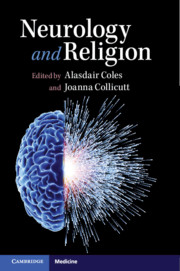Book contents
- Neurology and Religion
- Neurology and Religion
- Copyright page
- Contents
- Contributors
- Preface
- Part I The Neurological Study of Religion
- Part II Neurology and Religion
- II.I Clinical Conditions
- Chapter 9 Temporal Lobe Epilepsy, Dostoyevsky and Irrational Significance
- Chapter 10 Parkinson’s Disease, Religious Belief and Spirituality
- Chapter 11 Beyond Reasonable Doubt
- Chapter 12 Ramadam Fasting and Neurologic Disorders
- Chapter 13 Autism and the Panoply of Religious Belief, Disbelief and Experience
- Chapter 14 Personhood and Religion in People with Dementia
- Chapter 15 Religion and Frontotemporal Dementia
- II.II Therapy
- II.III Death and the Brain
- Bibliography
- Index
- References
Chapter 12 - Ramadam Fasting and Neurologic Disorders
from II.I - Clinical Conditions
Published online by Cambridge University Press: 28 October 2019
- Neurology and Religion
- Neurology and Religion
- Copyright page
- Contents
- Contributors
- Preface
- Part I The Neurological Study of Religion
- Part II Neurology and Religion
- II.I Clinical Conditions
- Chapter 9 Temporal Lobe Epilepsy, Dostoyevsky and Irrational Significance
- Chapter 10 Parkinson’s Disease, Religious Belief and Spirituality
- Chapter 11 Beyond Reasonable Doubt
- Chapter 12 Ramadam Fasting and Neurologic Disorders
- Chapter 13 Autism and the Panoply of Religious Belief, Disbelief and Experience
- Chapter 14 Personhood and Religion in People with Dementia
- Chapter 15 Religion and Frontotemporal Dementia
- II.II Therapy
- II.III Death and the Brain
- Bibliography
- Index
- References
Summary
Fasting – the voluntary withholding of food – is a common practice in many religions. Depending on the type of fast, weight loss may occur. Participants in a fast may develop negative sodium balance and have high rates of gluconeogenesis with amino acids as the primary substrates. Ketosis develops and ketones replace glucose as the primary energy source in the central nervous system, thereby decreasing the need for gluconeogenesis and sparing protein catabolism. Several hormonal changes occur during fasting, including a fall in insulin and T3 levels and a rise in glucagon and reverse T3 levels [1]. However, the effect of fasting on neurological diseases, direct or indirect (for instance through affecting medication adherence), are not well known. The mass participation in, and clear regulations of, Ramadan fasting make it an ideal opportunity to study these issues.
- Type
- Chapter
- Information
- Neurology and Religion , pp. 130 - 138Publisher: Cambridge University PressPrint publication year: 2019
References
- 1
- Cited by



